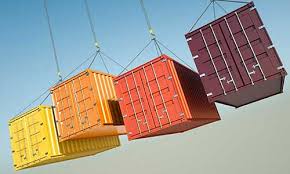Trade between Africa and Europe has been slowly growing over time. This is because there is a need for raw materials, manufactured items, and agricultural products. Cargo transportation is the most important part of this industry because it connects big ports like Lagos, Durban, Mombasa, Antwerp, and Rotterdam. However, businesses that work in this corridor face a number of problems that might make things more expensive, slow down delivery, and lower productivity. In this article, we explore the top challenges in Africa–Europe cargo shipping and provide practical strategies to overcome them
1. Complex Customs Regulations
The cargo shipping challenges are that every African and European country has its own rules for customs, paperwork, and trade bans. These rules change frequently, which can lead to delays at ports, penalties for incorrect documentation, or even shipments being rejected.
Solution:
The African Continental Free Trade Area (AfCFTA) and the EU’s trade framework are examples of trade agreements that change all the time.
Hire a freight forwarder who knows the customs rules for both Africa and Europe.
Invest in digital documentation tools to cut down on mistakes and make sure you follow the rules.
2. Problems with infrastructure
European ports are modern, but many African ports lack sufficient space for storage, cargo handling equipment, and road and rail connections, which often result in traffic jams, delays, and higher shipping costs.
Solutions:
Use smart logistics planning tools to change the route of freight when traffic is heavy.
To avoid bottlenecks, use a mix of marine, air, and road freight.
Pick shipping partners who have strong local networks and warehouses that have been around for a long time.
3. Shipping charges are high
Because of high fuel prices, high port handling costs, and limited equipment, such as container imbalance, Africa-Europe trade lines have higher freight rates than other areas.
Solution:
Use AI-powered logistics tools to figure out how much demand there will be, make delivery schedules better, and reduce unnecessary.
Use consolidation services to save money by sharing cargo space.
To get the best prices, work out long-term deals with well-known shipping companies.
4. Risks to politics and security.
Political instability, pirate worries in the Horn of Africa, and unclear rules can all mess up supply networks. These things make insurance costs go up and can force ships to take longer journeys.
Solution:
Make sure you have enough marine insurance to protect yourself from losses.
Work with logistics providers who offer risk management and tracking in real time.
To depend less on high-risk areas, mix up your cargo routes.

5. The environment and sustainability Pressures
The shipping industry is under pressure to follow international environmental norms and lower its carbon emissions, such as the IMO 2023 carbon intensity measures. If you don’t follow the rules, you may face penalties and have less access to some European ports.
Solution:
Use digital route planning tools to cut down on fuel use.
Work with shipping companies that utilise ships that are good for the environment and methods that save fuel.
To cut down on emissions, make shipping schedules and load capacities as efficient as possible.
6. Limited Transparency and Tracking Challenge:
After a shipment leaves the port of origin, many companies can’t see it very well. Because of this lack of openness, customers are unhappy, and managing supply chains is hard.
Solution:
- Use AI-powered ERP and logistics tools to make sure you can see everything.
- Use tracking devices that work with the Internet of Things (IoT) to keep an eye on shipments in real time.
- Give customers dashboards to track their shipments so they can see what’s going on and feel more confident.
7. Lack of Skilled Workers
There aren’t enough educated logistics workers in either Africa or Europe, especially in port management, customs clearance, and digital supply chain operations, which makes things less efficient and takes longer to get things done.
Solution:
- Work with logistics vendors who put money into training and developing their workers.
- Use automation and AI technology to cut down on the need for manual processes.
- Build strong ties with local agents who know how things work on the ground.
Final Thoughts
The Africa-Europe trade route has much potential, but it also has many problems that can affect cost, speed, and efficiency. Businesses that do well are quick to change, use technology, and work with reliable logistics companies like Geedlaal Logistics. By getting beyond customs issues, infrastructural problems, high shipping costs, and lack of transparency, businesses may build strong supply chains that help both continents grow. To solve these problems, you need to organise your logistics smartly and become digital . All you need is a good partner like Geedlaal Logistics. The future of delivering goods between Africa and Europe hinges on things like AI-powered logistics systems and real-time cargo tracking.
